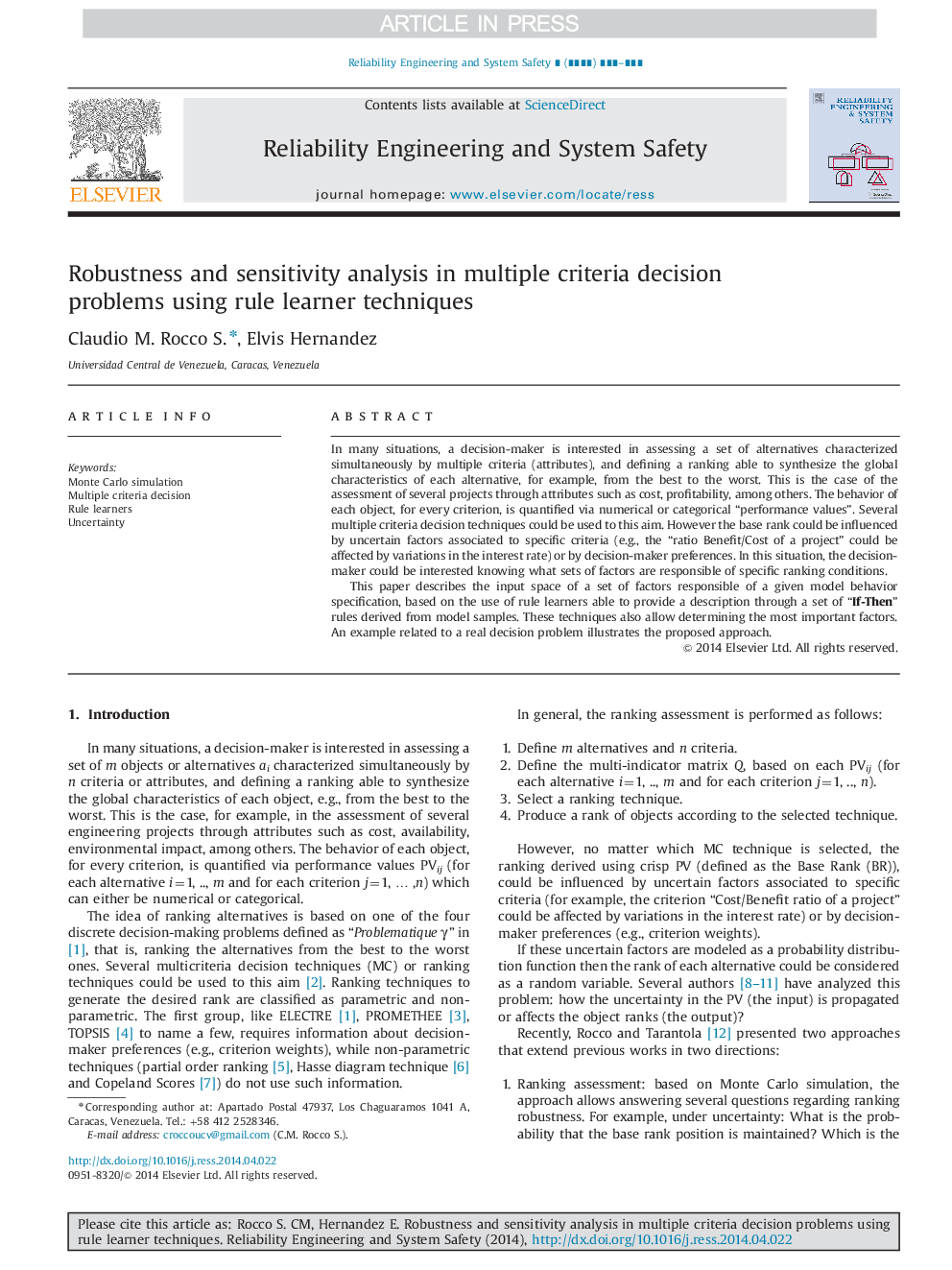| Article ID | Journal | Published Year | Pages | File Type |
|---|---|---|---|---|
| 7195712 | Reliability Engineering & System Safety | 2014 | 8 Pages |
Abstract
In many situations, a decision-maker is interested in assessing a set of alternatives characterized simultaneously by multiple criteria (attributes), and defining a ranking able to synthesize the global characteristics of each alternative, for example, from the best to the worst. This is the case of the assessment of several projects through attributes such as cost, profitability, among others. The behavior of each object, for every criterion, is quantified via numerical or categorical “performance values”. Several multiple criteria decision techniques could be used to this aim. However the base rank could be influenced by uncertain factors associated to specific criteria (e.g., the “ratio Benefit/Cost of a project” could be affected by variations in the interest rate) or by decision-maker preferences. In this situation, the decision-maker could be interested knowing what sets of factors are responsible of specific ranking conditions.
This paper describes the input space of a set of factors responsible of a given model behavior specification, based on the use of rule learners able to provide a description through a set of “If-Then” rules derived from model samples. These techniques also allow determining the most important factors. An example related to a real decision problem illustrates the proposed approach.
Keywords
Related Topics
Physical Sciences and Engineering
Engineering
Mechanical Engineering
Authors
Claudio M. Rocco S., Elvis Hernandez,
